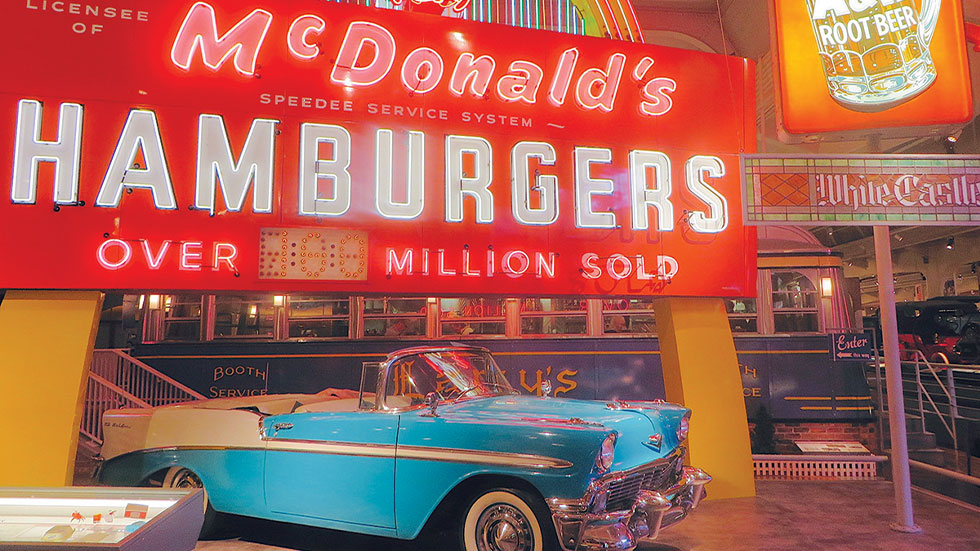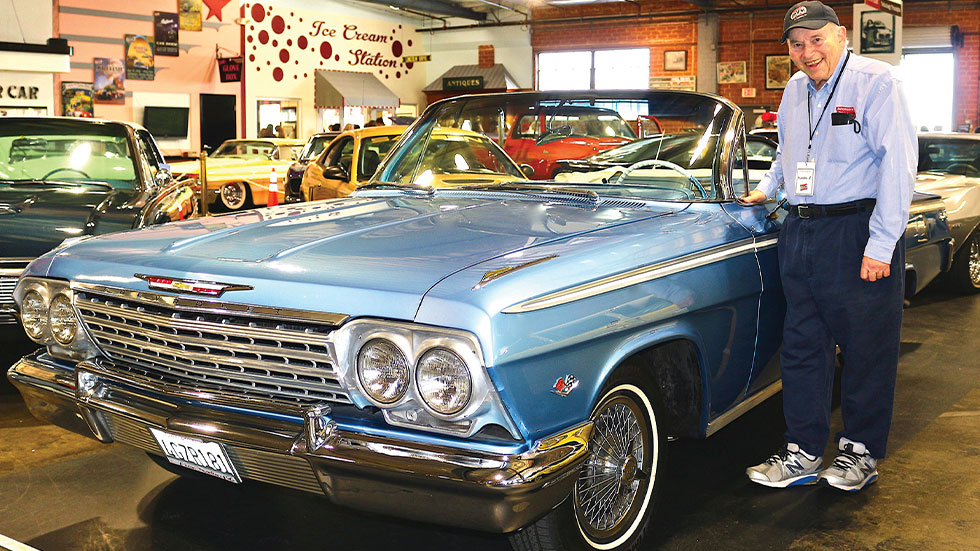Car Museums Worth the Drive
Our writer shares his 10 favorite car museums in the US

From Henry Ford perfecting the assembly line to build the Model T, through the construction of the Interstate Highway System, to a young driver experiencing the freedom of their first car, the story of 20th-century America is tied to the development of the automobile. Museums that trace this history are popular destinations for car buffs, but they also appeal to anyone who has ever sat in the back seat playing license plate tag on family road trips.
As someone who has driven across America to more than 200 car museums over the past decade for my book Roadster Guide to America’s Classic Car Museums & Attractions, I’m often asked which museums are my favorites. In my opinion, the following are the top car museums in America.
Cape Cod’s Heritage Museums and Gardens in Sandwich, Massachusetts, houses a vintage auto collection inside a three-tiered Shaker barn. Selections from the 42-car collection, which ranges from an 1899 Winton Motor Carriage to a 1965 Ford Country Squire station wagon, are on view from mid-April through mid-October. Look for the 1909 White Model M steam car once owned by President William Howard Taft, who helped popularize car ownership in America.
 The 1933 Alfa Romeo 8C 2300 Spider at the Simeone Foundation Automotive Museum; Photo by Michael Milne
The 1933 Alfa Romeo 8C 2300 Spider at the Simeone Foundation Automotive Museum; Photo by Michael Milne
Ever since the second model of the automobile was produced, people have wondered which vehicle is faster. The race for the answer is celebrated at the Simeone Foundation Automotive Museum in Philadelphia. Dedicated to motor racing, the museum is home to car #1 in the National Historic Vehicle Register: the 1964 Shelby Cobra Daytona Coupe Prototype. It also presents slick European racing vehicles, including those made by Bugatti, Alfa Romeo and Aston Martin. Time your visit for the twice-a-month Demonstration Days when museum staff demonstrate historic cars, like a 1956 Maserati, on the lot out back.
Because Tampa Bay Automobile Museum founder and auto collector Alain Cerf is a mechanical engineer, cars in this museum focus on leading-edge technology rather than appearance. Along with his son, Olivier, this enterprising Frenchman has assembled a 65-car group in Pinellas Park, Florida. Father and son have a soft spot for pre-World War II vehicles, especially those with rear engines, like the rare Czech-built 1938 Tatra T97.
 A Czech 1947 Tatra T-87 Saloon and French 1932 Helicron at the Lane Motor Museum; Photo by Larissa Milne
A Czech 1947 Tatra T-87 Saloon and French 1932 Helicron at the Lane Motor Museum; Photo by Larissa Milne
Not surprisingly given its slogan “Unique Cars from A to Z,” Nashville’s Lane Motor Museum is home to a host of unusual vehicles ranging from a British-built 1922 A.B.C. sports car to a West German 1957 Zündapp Janus micro car. Also on display: motorcycles, bicycles and military vehicles like the 1959 LARC-LX, the US military’s largest amphibious craft. Capable of sailing across rough seas and then driving on rugged terrain, the 62-foot-long behemoth sported 9-foot-high tires and could transport 120 troops.
The Chevy Corvette is arguably the iconic American sports car. Its seven-decade legacy is honored at the National Corvette Museum in Bowling Green, Kentucky. More than 80 Corvettes are showcased, starting with the car’s birth in 1953 up through the latest model. The museum also offers tours of the nearby Corvette assembly plant.
The Auburn Cord Duesenberg Automobile Museum in Auburn, Indiana, is housed in the beautifully restored 1930s Art Deco headquarters and dealer’s showroom of the Auburn Automobile Company. In addition to the namesake Auburns, Cords and Duesenbergs, the 120-car collection highlights cars built in Indiana, such as a 1915 Studebaker, 1916 Westcott and 1920 Lexington.
 A Chevy Bel Air is part of the vintage neon sign exhibit at The Henry Ford Museum; Photo by Michael Milne
A Chevy Bel Air is part of the vintage neon sign exhibit at The Henry Ford Museum; Photo by Michael Milne
The Henry Ford Museum of American Innovation in Dearborn, Michigan, is a colossal assemblage of American history with exhibits devoted to automobiles, aviation, manufacturing, railroads and more. Appropriately, the “Driving America” exhibit features the first gasoline-powered automobile built by Henry Ford: an 1896 Quadricycle Runabout. Other models range from the first Mustang that rolled off the assembly line in 1964 to a more prosaic 1984 Plymouth Voyager Minivan that changed suburban lifestyles forever.
Los Angeles is home to several car museums. Slithery stainless-steel ribbons wrap the sleek exterior of the Petersen Automotive Museum; exhibits inside demonstrate how the development of the automobile transformed society. Set in a display somewhat like a high-end art gallery, noteworthy cars—like the 1966 Ford Thunderbird from the movie Thelma & Louise—are installed so that visitors can appreciate their design from all angles.
 Zimmerman Automobile Driving Museum cofounder Stanley Zimmerman poses with a Chevy Impala convertible; Photo by Larissa Milne
Zimmerman Automobile Driving Museum cofounder Stanley Zimmerman poses with a Chevy Impala convertible; Photo by Larissa Milne
Hands-on car buffs should seek out the Zimmerman Automobile Driving Museum in El Segundo, California. Cofounded by the late automobile enthusiast Stanley Zimmerman, the 130-car collection follows his philosophy of making cars accessible to the public; he often referred to it as a “petting zoo” for cars. Visitors can even climb in for a view from the driver’s seat. Every second and fourth Sunday of the month, docents take visitors for a drive on nearby streets in automobiles such as a 1929 Ford Model A Fire Chief car or a 1971 AMC Javelin muscle car.
If you can visit only one car museum, though, it should be the 435-vehicle Gilmore Car Museum in Hickory Corners, Michigan. The main building displays temporary exhibits such as “The Evolution of America’s Sports Car.” What makes the Gilmore special is a 90-acre campus that’s also home to the Lincoln Motor Car Heritage Museum, Cadillac LaSalle Club Museum, Classic Car Club of America Museum, Model A Ford Museum, Pierce-Arrow Museum, Museum of the Horseless Carriage, H.H. Franklin Collection, and exhibits of motorcycles, toy cars and more. You could easily spend several days here. (The main museum is open year-round; some outer buildings operate April 1 to November 30.)
Any museum on this list is a worthwhile detour on your next road trip—or perhaps a welcome pit stop for a carful of cranky family members wondering “when are we gonna get there?”
